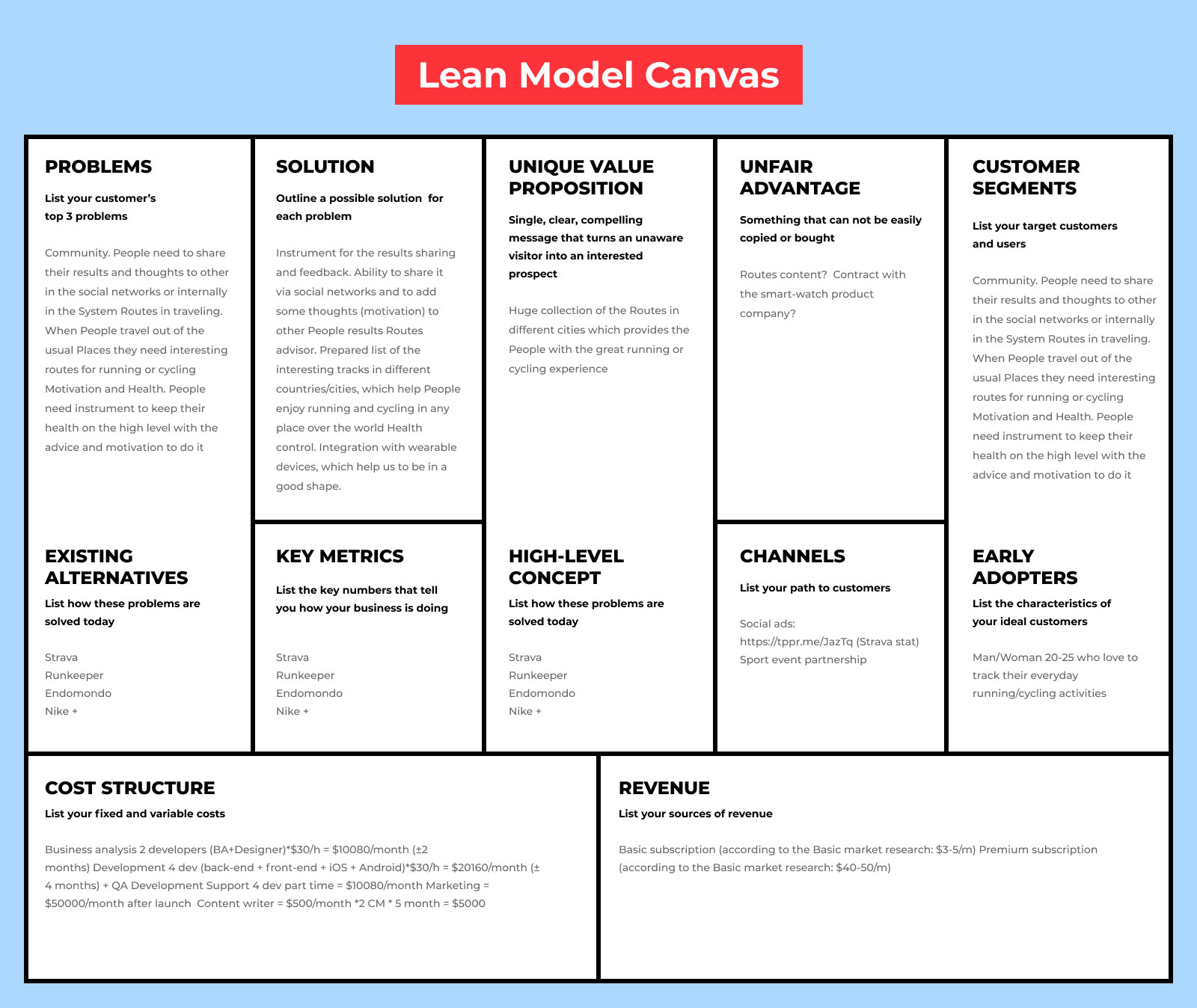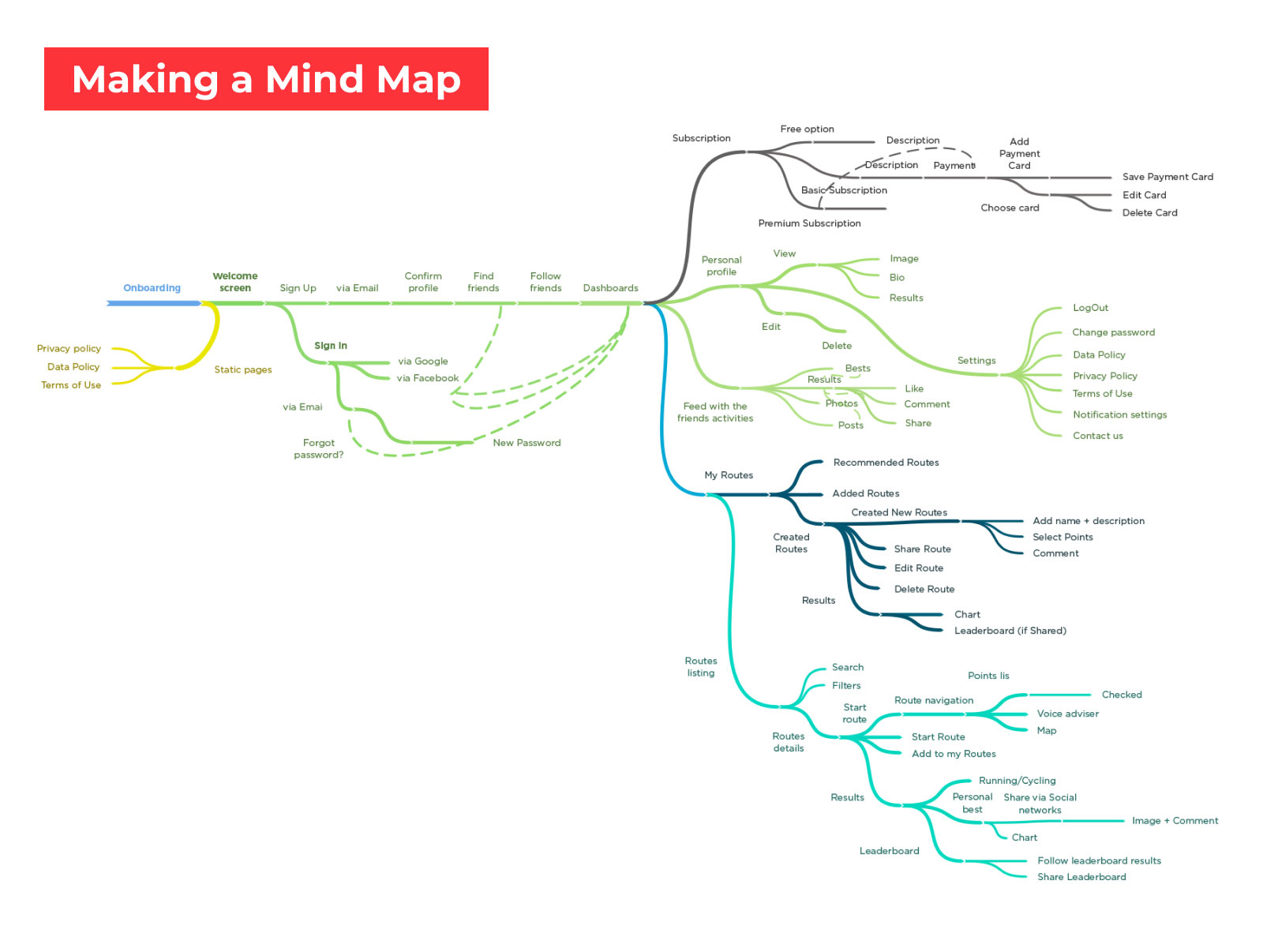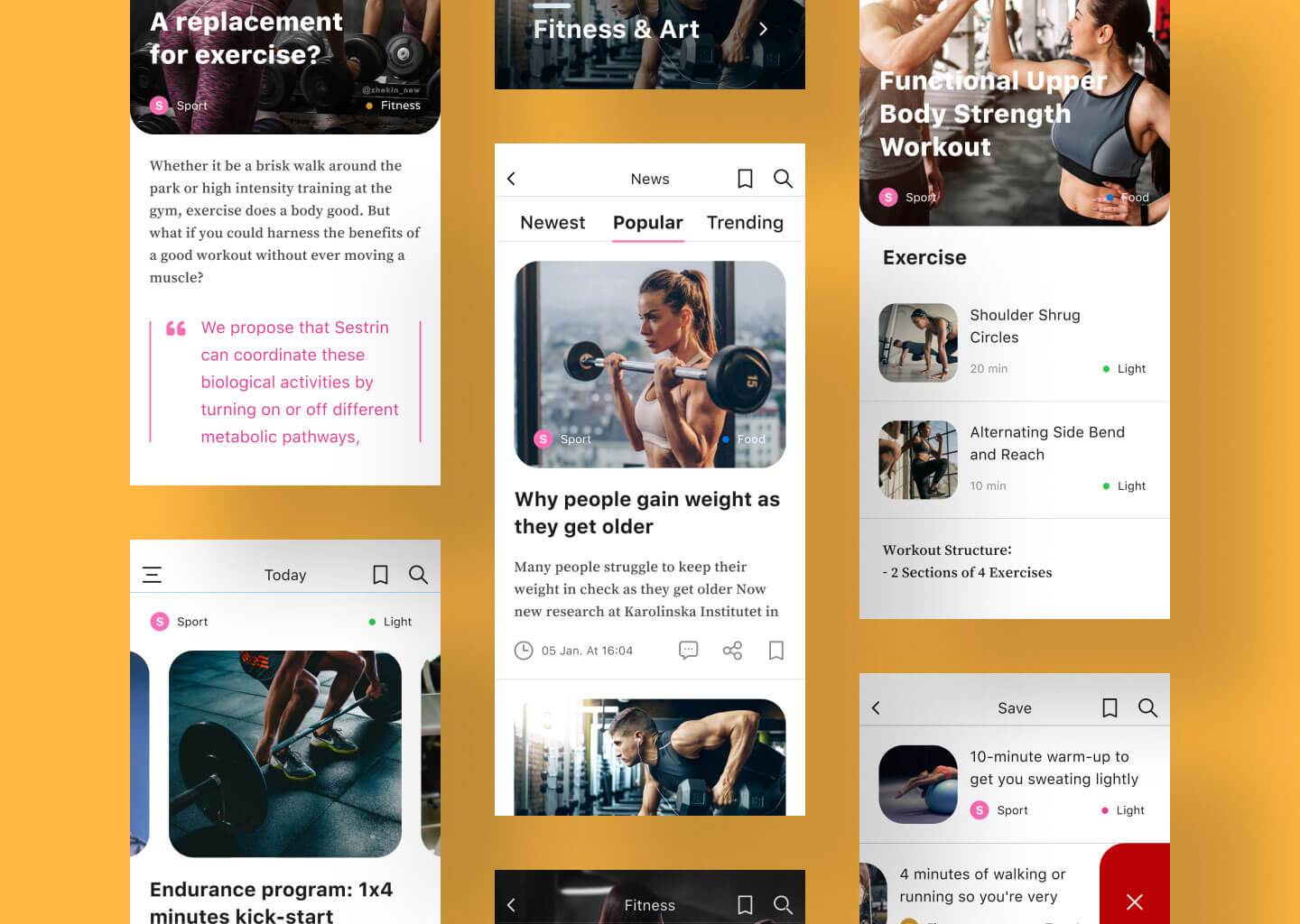Cost Of Designing An App Uk
In this article, we look at all stages of design to estimate the cost for creating a great design for your application.
Contents:
- Evaluating The Idea
- Lean Model Canvas
- Research on The Market & Trends
- Making a Mind Map
- Finding a Buyer Persona
- User Story Mapping
- Low-fidelity Prototyping
- MLP vs MVP
- Building a User Experience
- UI Design
- What Does App Design Cost Consist Of?
- Conclusions
Before speaking about the cost of mobile app design, we should address what design involves. Design isn't only about the appearance of your product. It also defines how the app works and what cause-effect relationships it has.
"Design is not just what it looks like and feels like. Design is how it works."
— Steve Jobs
So let's explore the stages of design development. Product design starts with the product idea. It's a mistake to start creating low- or high-fidelity prototypes in the very beginning. A designer should first take part in evaluating the idea. This is needed for a complete understanding of the concept. It's also necessary to make sure that designers, developers, and the client have the same vision for the product.
Evaluating The Idea
This stage is necessary to get the team on board with the idea of the project. The main challenges are to define the problems your app should solve and how it will solve them. The task for the development team is to analyze the idea and gather information about the client's vision of the project. This stage is characterized by constant brainstorming sessions, conversations with the client, and filling out the Lean Model Canvas.
Lean Model Canvas

One of the biggest challenges at this stage is to make sure the development team's vision of the project aligns with the client's vision. This stage also allows developers to make preparations before starting development. Let's look at the segments of the Lean Model Canvas.
- Problem
This segment defines the problem your product will solve. It's better to choose a big problem because people should desire to solve some problem with your product. In addition, you should make a list of your competitors that solve similar problems.
- Customer segments
It's important to understand who will use your app at the early stages of development. Segment your target audience by different criteria to find the needs of users and choose the correct marketing channels.
- Unique value proposition
The main challenge of this segment is finding the unique feature that will allow your app to stand out from the crowd. At Mind Studios, we believe the products that we create should bring something new to the market and improve the field.
- Solutions
Here we describe ways to solve the problem we've defined, keeping in mind our customer segments and unique value proposition.
- Channels
This segment helps you choose the correct marketing channels for promoting the application in places where your target audience gathers.
- Revenue streams
Usually, the main goal of app development is making money. The task in this segment is to choose a business model. You should choose how your app will make money: by charging to download the app, through subscriptions or advertisements, using a freemium model, or by offering in-app purchases. For more on this topic, check out our article on how free apps make money.
- Design cost structure
This segment allows you to estimate the resources needed based on the scale of your project. This is needed to assess the development situation and costs rationally.
- Key metrics
These are numerical measures of your product's success, such as number of installations, total revenue, and anything else that helps you to draw conclusions about the success of your iOS and Android applications.
- Unfair advantages
Here we need to find an advantage that competitors don't have — our silver bullet. This could be a novel technology, government support, or something else.
Research on The Market & Trends
During the next stage of design, you should research market leaders and the market situation to learn relevant trends. Here are some key design trends in 2021:
Simplification of the user journey
Usually, we use an application to reach a particular goal. So finding the best way to reach that goal will result in the best user experience. To create a simple user journey, you should build a navigation map and think over cause and effect relationships.
Content-centered experience
In 2021, people work and spend free time by taking in content. For this reason, mobile and web applications should be comfortable for watching images and videos and reading books, posts, and articles.
Full-screen
2018 started the age of frameless devices, and 2021 is continuing this trend. When designing an application, you should remember that people want to use all the capabilities of their device screens. Allow them to enjoy high definition images and videos and offer a detailed user interface.
Vibrant colors
Today isn't only the age of the full-screen experience but also the age of OLED and Retina screens. This is why developers and designers are using vibrant colors. Color is one of the most powerful tools of designers, as it can trigger specific emotions and actions.
Conversational design
Messaging is an intrinsic part of our lives. According to Statista, over 12 million messages are sent per minute in 2018. Messaging is an important communication channel today, so it's necessary for app developers to offer high-quality and user-friendly chat functionality.
Making a Mind Map
Once you've filled out the Lean Model Canvas, you can create a mind map by analyzing your Lean Model Canvas and taking into account your requirements for the project. A mind map visualizes the logical structure between the main components of the project.

So how does a mind map work? We use mind maps because usually our train of thought is unstructured. Ideas are spontaneous and overlap each other. A mind map helps us overcome this weakness of how our brains work. When creating a mind map, we place the main problem or goal of your product in the center of the map. The next step is to create the segments of this goal around it. The third step is to create ideas and requirements for each segment. Once you've created the mind map, you can start making Epic Lists.
What are Epic Lists and why do we need them? Epic Lists are more detailed and structured pieces of the mind map. The goal at this stage is to define the global epics and functional requirements for them.. You should split up your mind map correctly to get workable Epic Lists. This is needed for further app development.
Finding a Buyer Persona
This stage involves creating a detailed portrait of the person who wants to use your application. This portrait should include:
- demographic data
- social standing
- behavioral model
A more detailed buyer persona allows the development team to correctly define the problem your app will solve for this specific person. Remember that the best way to define the problem is using behavior model research. The appearance of your application will also depend on who the target user is.
User Story Mapping
For a better understanding of how your buyer persona will use your product, you should perform user story mapping. A user story map focuses on the business value and customer needs. It's a table with epics as column headings and user stories below them. The correct order of user stories allows the designer to create the navigation concept.
Low-fidelity Prototyping

A low-fidelity prototype, or navigation concept, is needed to design the navigation between screens according to the platform you'll build for (iOS, Android, web). We use low-fidelity prototypes as an easy and quick way to describe complex design concepts. These prototypes are good for testing functionality and creating a clear map of changes.
One of the pros of low-fidelity prototyping is that it facilitates teamwork. To create a low-fidelity prototype, team members can collaborate because creating it doesn't require any special design skills. This prototype allows you to set clear expectations of the project for all team members.
MLP vs MVP
At Mind Studios, we create a minimum loveable product (MLP) for the first release. But we should explain what an MLP is and what differences there are between a minimum viable product (MVP) and an MLP. An MVP is an application that contains a minimal number of features. Usually, an MVP means low quality in favor of quickly testing a hypothesis. This works well when you develop an absolutely innovative product with no alternatives in the present market.
But today, the mobile application market is overcrowded, and new products basically offer upgrades to features and services available in existing products. In this situation, users expect to see more than an application with minimum functionality. A minimum lovable product is a more complete version that can compete in the market.
The MLP stage also allows you to make a rough estimate and conduct a test of quality. This test is necessary to start the next stage — UX design.
Building a User Experience
The UX design stage includes building a detailed interface of the project and is the basis for further development. At this stage, you should also create a detailed description of user scenarios and make high-fidelity prototypes. These prototypes are needed to run tests on your target audience and receive feedback. The next stage is to create an approximate project plan and a refined estimation.
Read more about UX design:
- 6 Best Practices for Mobile UX Design
- 5 Things That Will Ultimately Kill The Usability Of Your Design
UI Design

There's still one final stage before development. This stage is needed to make not only functional design but also visual design elements. Another important part of this stage is making a logo for your product. You can read more about the importance of logo and icon design in this article: How to Create a Logo for Your Mobile App.
You should create a full design before starting development. The designer's challenge is to combine UX and UI solutions and build the final look of the product.
What Does App Design Cost Consist Of?
The main question is how much does it cost to design a mobile app. As you can see, to make a successful design for an app requires preparation. So what goes into the cost of designing an app?
- Evaluating the idea & filling out the Lean Model Canvas
- Researching the market & trends
- Creating a mind map
- Defining a buyer persona
- Creating a user story map
- Creating a low–fidelity prototype
- Defining the minimum lovable product (MLP)
- UX design
- UI design
As you can see, design accounts for almost all stages of development apart from coding. Let's investigate the main factors that form the price of mobile app design.
- Project scale
- Platforms (iOS, Android, web)
- Hourly rate of the design team
The project scale is the X-factor of mobile app design cost estimation because creating a design for a simple application and for a complex platform will require different amounts of time and therefore cost different amounts. The project scale and complexity of the app design depend on the number of screens.
- Design for an on-demand food delivery app like Postmates takes in the neighborhood of 150 hours
- Design for a messaging app like WhatsApp or Signal-like app takes about 250 hours
- Design for a massive shopping app like Wish development takes around 400 hours
In addition, you should remember the factors that make up the hourly rate of the development team. The first factor is the credibility of the team, which is based on client reviews. The second factor is where the development team is located. Let's explore average rates for different countries/regions:
| Country/Region | Average hourly rate |
|---|---|
| India | $26 |
| South America | $34 |
| Eastern Europe | $50 |
| Western Europe & UK | $70 |
| Australia | $110 |
| North America | $168 |
Based on our own experience in design and development, we estimate that if you want to create a great application of middling complexity you should have in the neighborhood of $10,000 for design costs.
Conclusions
As you can see, design is a very important part of app development. Design isn't only about drawing the application but also about making interactions between screens, creating the user experience and the user interface, and making sure the client and development team have the same vision for the project. Design isn't simple work, but if you want to create your own application, we can help you. Feel free to contact us to get a free consultation on design and development.
Cost Of Designing An App Uk
Source: https://themindstudios.com/blog/cost-to-design-an-app/
Posted by: mcdanielbescarrelus.blogspot.com

0 Response to "Cost Of Designing An App Uk"
Post a Comment